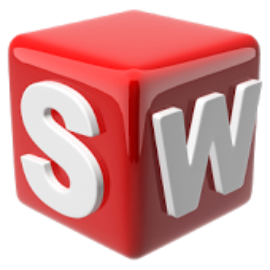Introduction to SolidWorks
The training course provides the basics of computer design using the SolidWorks software.
SolidWorks is a PLM (Product Lifecycle Management) software used by the industry and higher education institutions most often. It allows intuitive creation of product digital models that can be used in digital simulations of various kind (elasticity, strength, heat transfer, flow analysis, electromagnetic fields, CNC processing, pipeline projects, etc.). Users of SolidWorks can visualise the new products, prepare their technical documentation (drawings), 3D prototypes, and directly transfer data to automated mechanical processing equipment.
The course
After the course, the participants will be able to use SolidWorks simulations in testing the theoretical knowledge in practice during not only the study process, but also the scientific work. The course will also introduce the participants to the PLM concept and realisation of contemporary cooperation, give the basic skills in 3D modelling, assembly drawing and generation of drawings from models. Overview of the possible digital simulations, preparation of simple models for some of them and gaining results are some of the tasks included in the course.
Course plan
- Essence of PLM concept. Introduction to SolidWorks and the three basic modules. Basics of interface. Basic principles of file organisation and operations with them. Manipulations of views in the digital space.
- Modelling of parts in Part regime. Basic tools of creating 2D sketches, operations with them, types of boundary conditions, fully defined sketches. Concept of design idea. Parametric modelling and realisation thereof. Extrude and Revolve operations for creating 3D models. Defining of operation characteristics. Defining of material properties and other information on the product.
- Modelling of parts in advanced Part regimes. Loft and Sweep operations for creating complicated 3D models, hole wizard. Concept of Multibody.
- Modelling of assembly drawing in Assembly regime. Types of mates and their practical implementations. Toolbox — libraries of standardised parts. Types of simple simulations: disassembly and assembly, animation, rendering.
- Basic principles of creating drawings in Drawing regime. Acquiring of basic views of part drawings and composing thereof on a sheet.
- Preparation of technical documentation in Drawing regime. Acquiring of complicated drawing components from a model. Import of dimensions and adjustment thereof to standard requirements.
- Preparation of assembly drawings in Drawing regime. Attributing position numbers to parts and specifics generation.
- Types of digital simulations: elasticity and strength, kinematics, flow analysis. Modelling of pipeline equipment.

